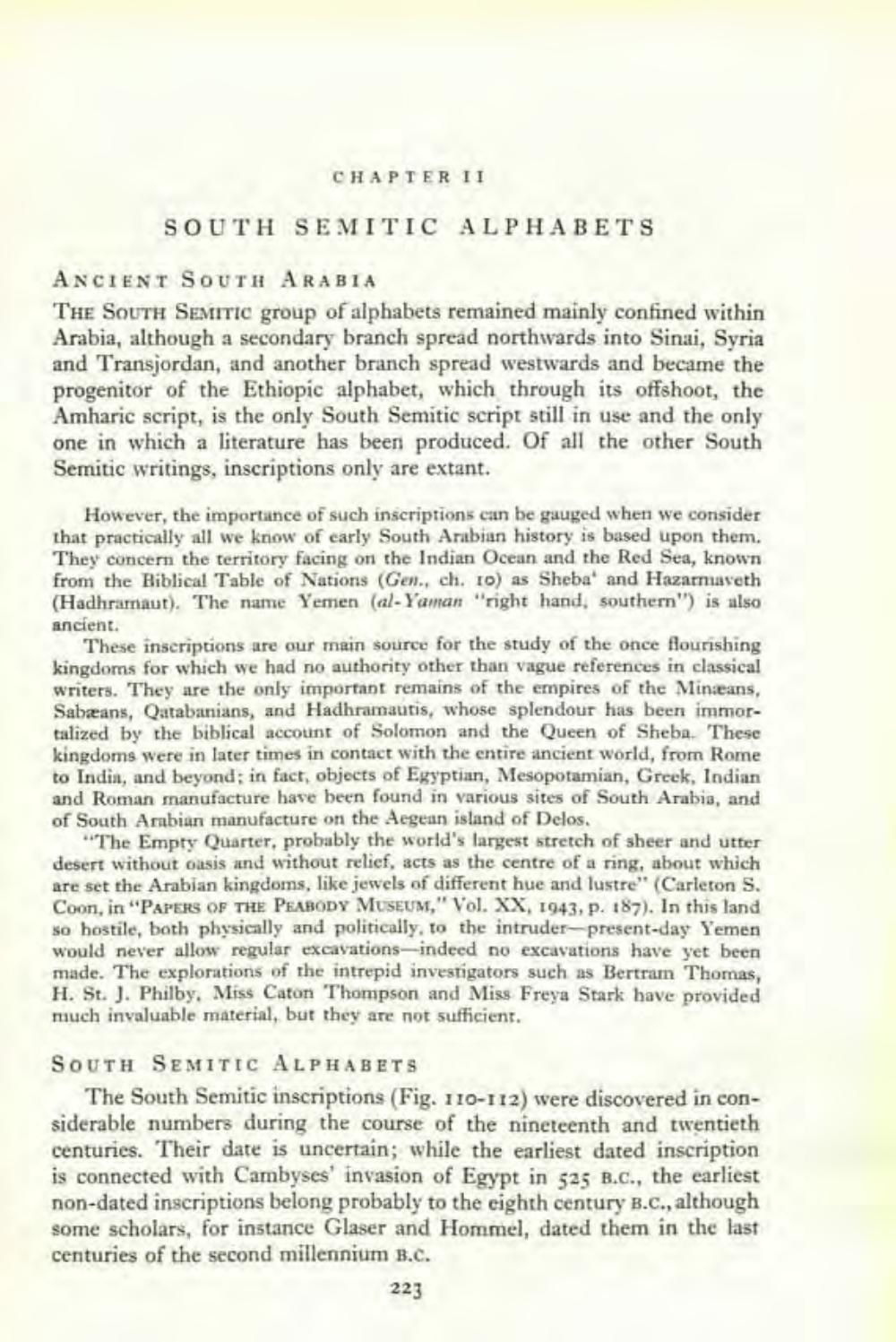________________
CHAPTER II
SOUTH SEMITIC ALPHABETS
ANCIENT SOUTH ARABIA THE SOUTH SEMITIC group of alphabets remained mainly confined within Arabia, although a secondary branch spread northwards into Sinai, Syria and Transiordan, and another branch spread westwards and became the progenitor of the Ethiopic alphabet, which through its offshoot, the Amharic script, is the only South Semitic script still in use and the only one in which a literature has been produced. Of all the other South Semitic writings, inscriptions only are extant.
However, the importance of such inscriptions can be gauged when we consider that practically all we know of carly South Arabian history is based upon them. They concern the territory facing on the Indian Ocean and the Red Sea, known from the Biblical Table of Nations (Gen., ch. 1o) as Sheba' and Hazarmaseth (Hadhramaut). The name Yemen (al-Yaman "right hand, southern") is also ancient.
These inscriptions are our main source for the study of the once flourishing kingdoms for which we had no authority other than vague references in classical writers. They are the only important remains of the empires of the Minieans, Sabæans, Qatabanians, and Hadhramautis, whose splendour has been immortalized by the biblical account of Solomon and the Queen of Sheba. These kingdoms were in later times in contact with the entire ancient world, from Rome to India, and beyond; in fact, objects of Egyptian, Mesopotamian, Greek, Indian and Roman manufacture have been found in various sites of South Arabia, and of South Arabian manufacture on the Aegean island of Delos.
"The Empty Quarter, probably the world's largest stretch of sheer and utter desert without oasis and without relief, acts as the centre of a ring, about which are set the Arabian kingdoms, like jewels of different hue and lustre" (Carleton S. Coon, in "PAPERS OF THE PEABODY MUSEUM," Vol. XX, 1943, p. 187). In this land so hostile, both physically and politically, to the intruder-present-day Yemen would never allow regular excavations-indeed no excavations have yet been made. The explorations of the intrepid investigators such as Bertram Thomas, H. St. J. Philby. Miss Caton Thompson and Miss Freya Stark have provided much invaluable material, but they are not sufficient.
SOUTH SEMITIC ALPHABETS
The South Semitic inscriptions (Fig. 110-112) were discovered in considerable numbers during the course of the nineteenth and twentieth centuries. Their date is uncertain; while the earliest dated inscription is connected with Cambyses' invasion of Egypt in 525 B.C., the earliest non-dated inscriptions belong probably to the eighth century B.C., although some scholars, for instance Glaser and Hommel, dated them in the last centuries of the second millennium B.C.
223




